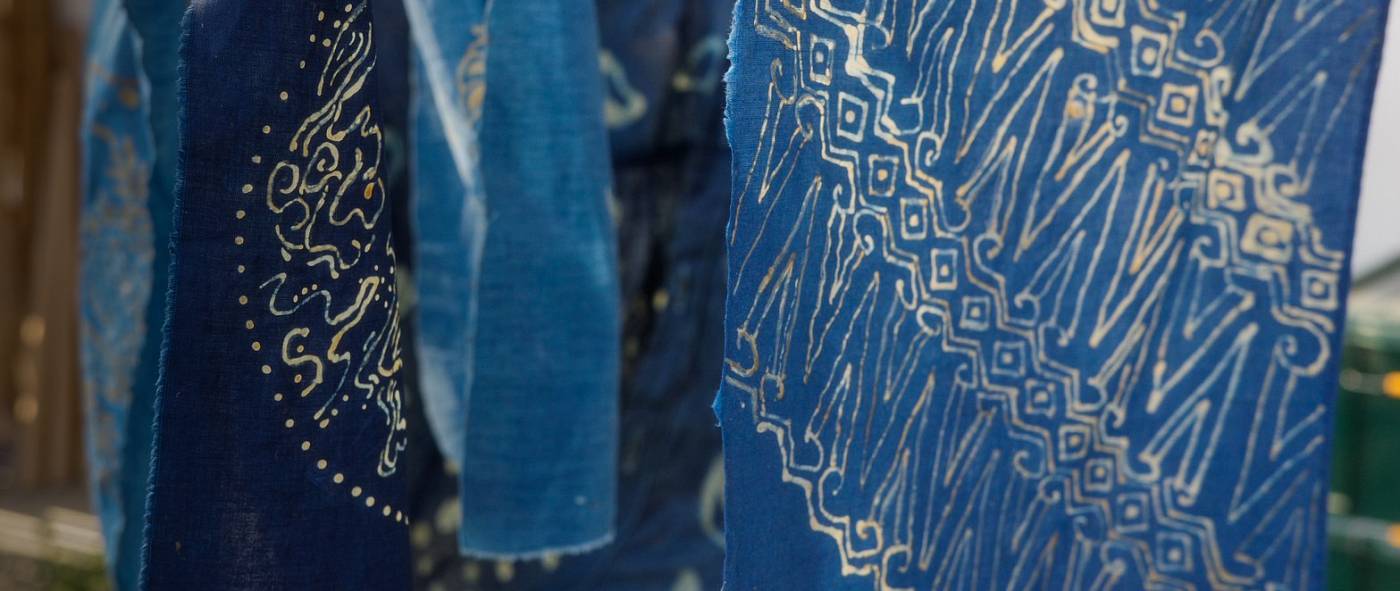
Making Handplanes with Björn Svantesson
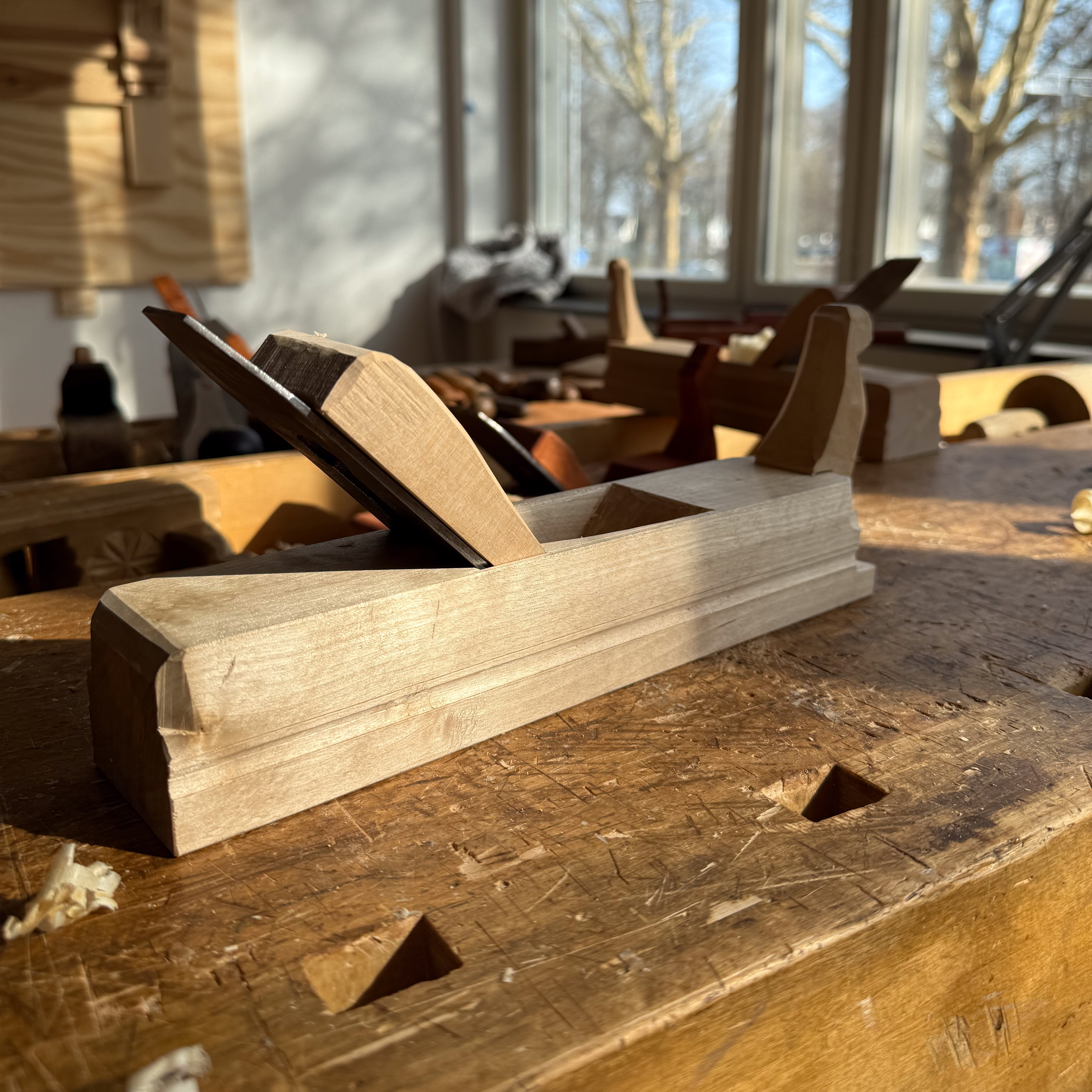
Handplanes are an essential tool for the woodworker, and they're something that anyone can build. Gabe Strand writes about making handplanes with Björn Svantesson in Sweden.
While traveling in Sweden last month, I passed through Mariestad, a small city on the southeastern shore of Lake Vänern, northern Europe’s largest lake. Mariestad is midway between Stockholm and Göthenburg, and home to Mariestad Beer, which seems to be the Pabst of Sweden. The town boasts cobblestone-lane neighborhoods dating to the 16th century, and a thriving University of Göthenburg satellite campus focused on Historical Preservation, where students study carpentry, landscaping, interior finishes, and traditional thatched roofs, gaining expertise that supports Sweden’s interest in its centuries-old built cultural heritage.
Mariestad is also the home of Björn Svantesson, a graduate of the preservation carpentry program and a scholar-builder working on his master’s degree in the Department of Conservation (known as DepCo). I had come to Mariestad to learn from Björn about one of his many specialties: making wooden handplanes in the style craftspeople used in the 17th century. I did not know Björn prior to my visit, but he gave me a warm welcome and treated me to three days of relaxed conversation balanced with focused building in the natural light of the woodworking studio on the DepCo campus.
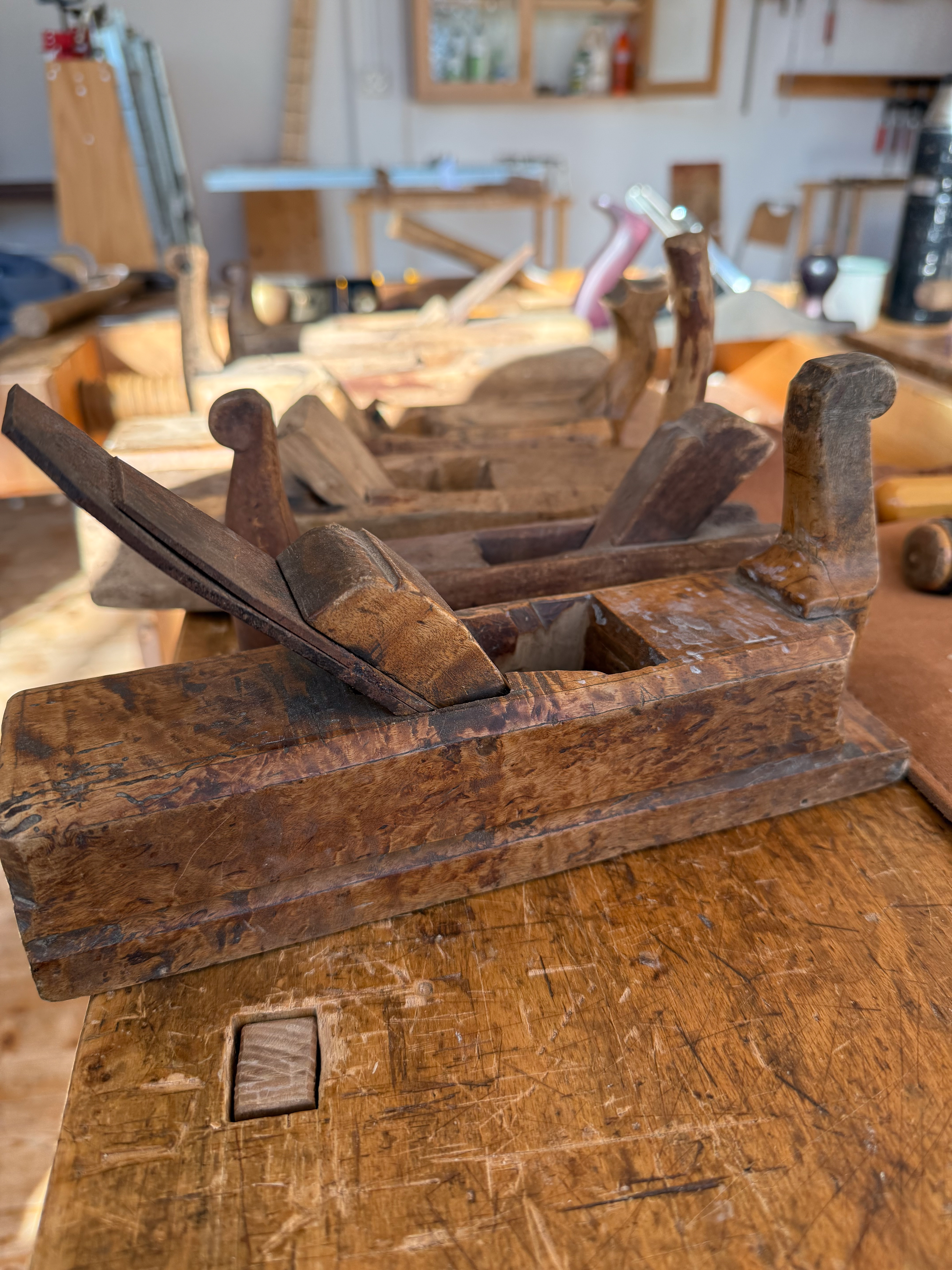
The secret Big Handplane doesn’t want us to know is that this essential hand tool is something anyone can build. If you are more familiar with the image of a handplane as synonymous with the sleek mechanical refinement of a Lie-Nielson #4 smoother fresh off the production line, planemaking may seem justifiably out of reach. But Björn is looking at early examples of this tool for inspiration, and with these antiques as the template, a woodworker can get the job done with only a few layout and cutting tools at hand. Björn is interested in how the woodworkers of 200-300 years ago worked, and recreating the tools of their trade reveals to him a wealth of information about their methods and approaches. Not least of which was the need at that time to make the tools you needed without too much fuss.

We decided to make a smoothing plane, basically a 14” long rectangular block of wood cradling a steel blade at 45 degrees to the sole of the block, held in place by a wooden wedge. Set the razor-sharp edge of the steel to protrude a hair from the sole of the plane body, and you can, whoosh, push it over a board, slicing off a see-through wood shaving that curls itself out of the mouth of the plane and onto the shop floor. To get the wood shavings to do all this effortlessly, though, required learning to lay out the precise dimensions of the cavity in the plane body the iron passes through, chopping mortises by hand, and cutting angles that refine the area where the plane and wedge meet tightly. To do this, we used a 90-degree and 45-degree square, a scratch awl, mortise chisels, a keyhole saw, and a small hand-cranked drill bit called a gimlet. Oh, and an axe to rough out the plane body blank.
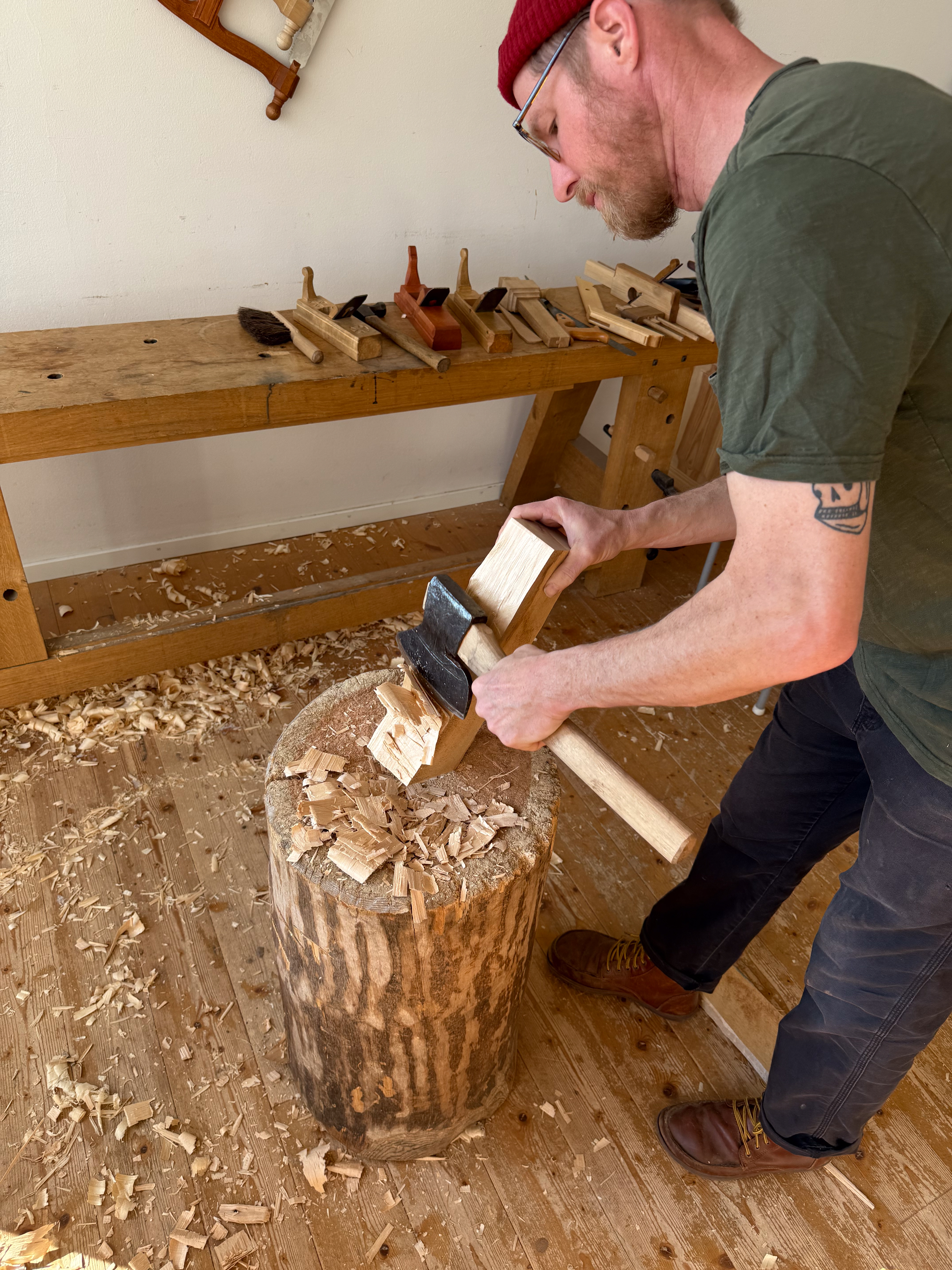
After the wedge was shaped to fix the steel plane blade (or “iron”) firmly in place, we moved on to shaping the “horn,” the handle at the front of the plane that gives the user something to hold onto. Horns come in the shape of dragon heads and other suggestively-curved abstract forms. One pleasing example in Björn’s collection is simply a natural branch sprouting from the plane body at just the right angle.
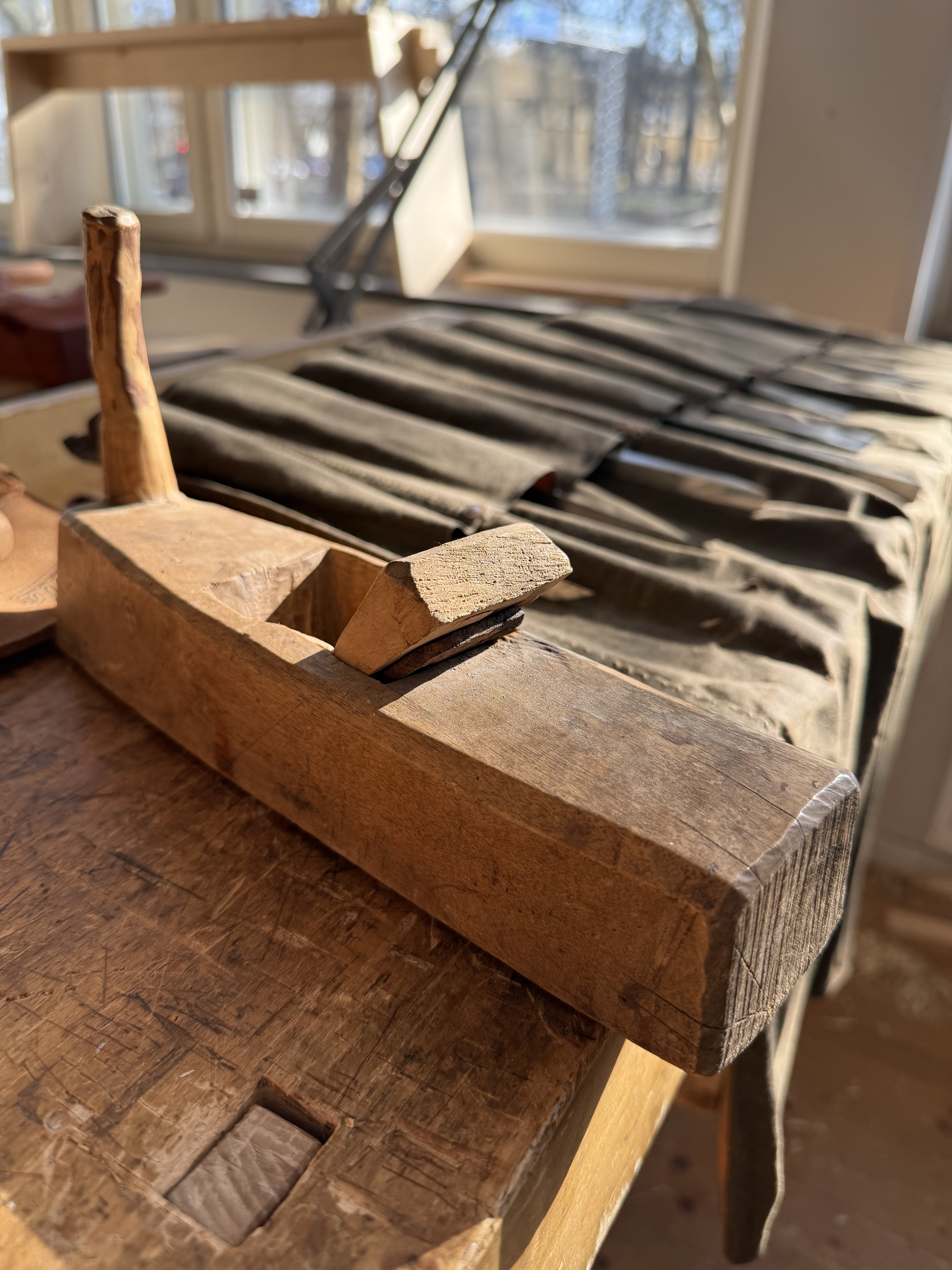
We attached our horns to the business end of the plane by chopping a dovetailed mortise and forming a corresponding tongue in the horn for a strong mechanical connection.
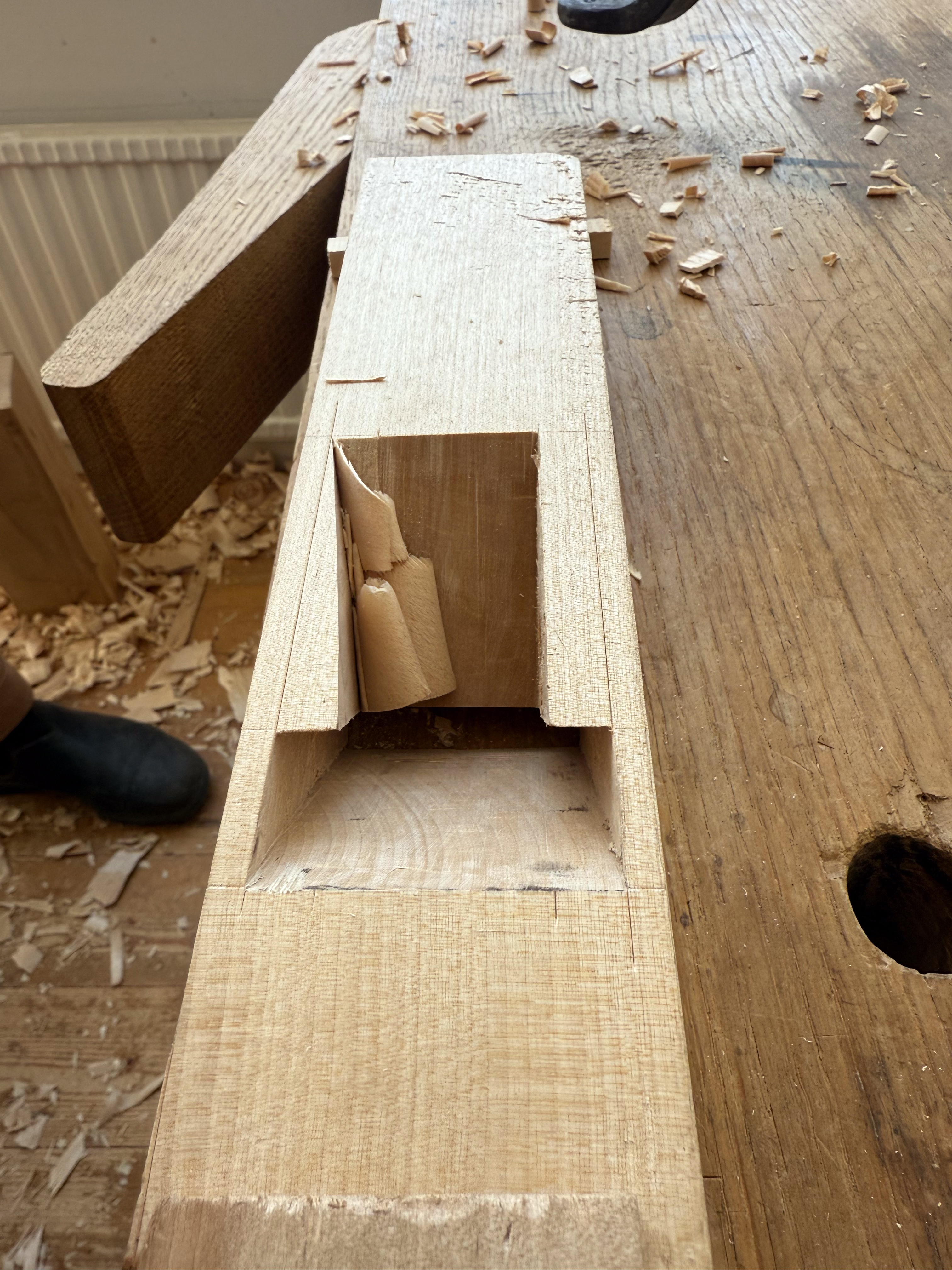
We carved the arch and facets of the horn with slöjd knives. Then we drilled and fixed the horn in place with a rose head nail. This is the way the old examples are constructed, and they have stood the test of time. We added a few details seen on other early planes, such as a racing stripe groove along the plane’s length, and some chip-carved coves and notches on the corners. Björn thinks many of the common markings and subtle profiles he observes on old, owner-built planes improved comfort and function in small ways. Preserving these details feels like being a step closer to the makers who also preferred to decorate their tools in this way.
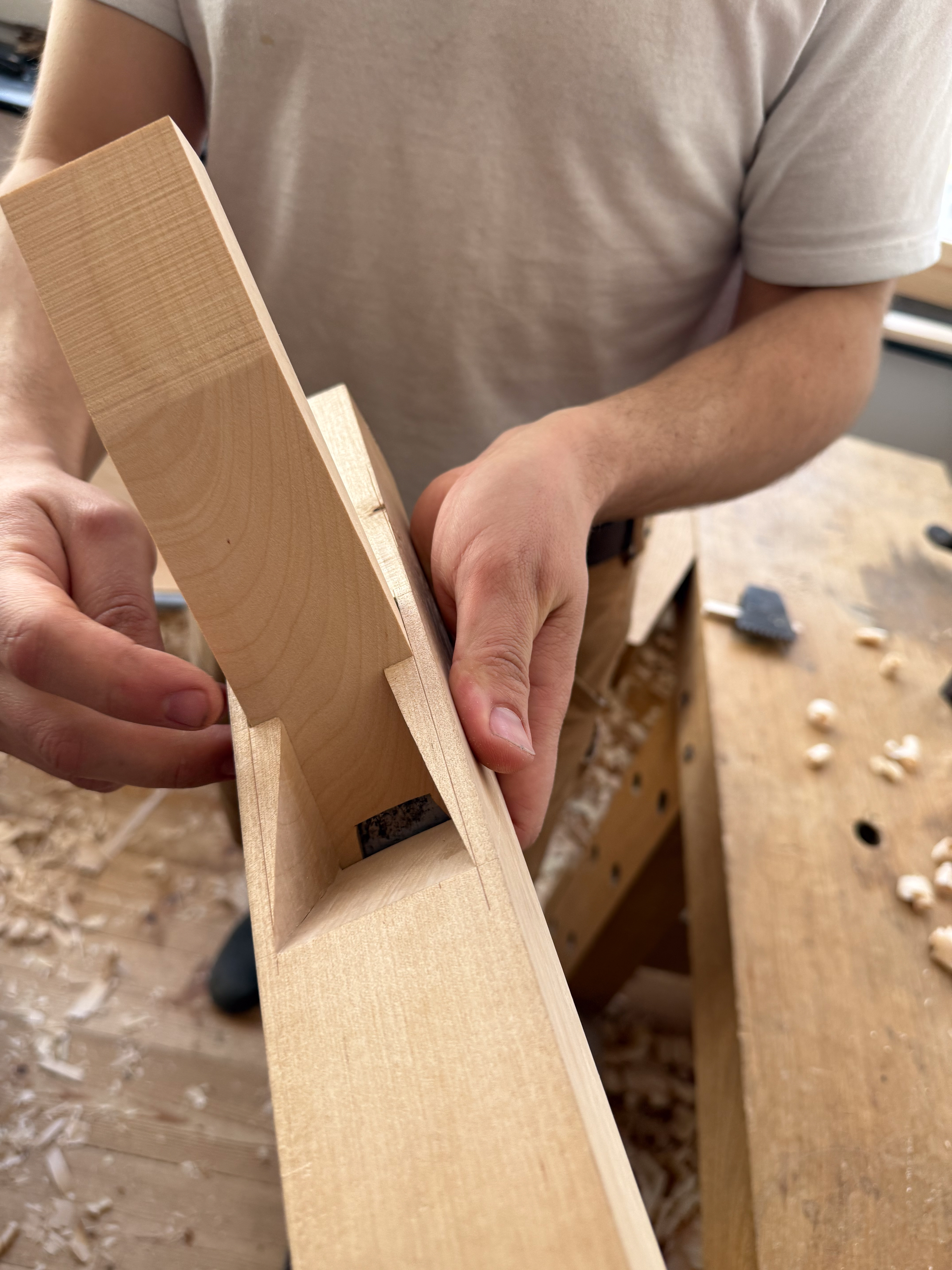
Björn and I ground the bevel of the plane irons to a fine point, using first a wet grinding wheel, then finer and finer grits of abrasive Japanese waterstones. With all the parts made as accurately as possible, I assembled my new tool, and Björn clamped a rough pine board to the workbench. By the way, the bench in question is a reproduction of the famous “Vasa bench,” lost in the 17th-century sinking of the enormous Vasa warship in Stockholm, recovered in 1961, and now recreated by archeology-obsessed woodworkers curious about how the old-timey sailor-carpenters kept their work clamped down on Swedish battleships. But as fun as that bench was to use, it’s a story for another time.
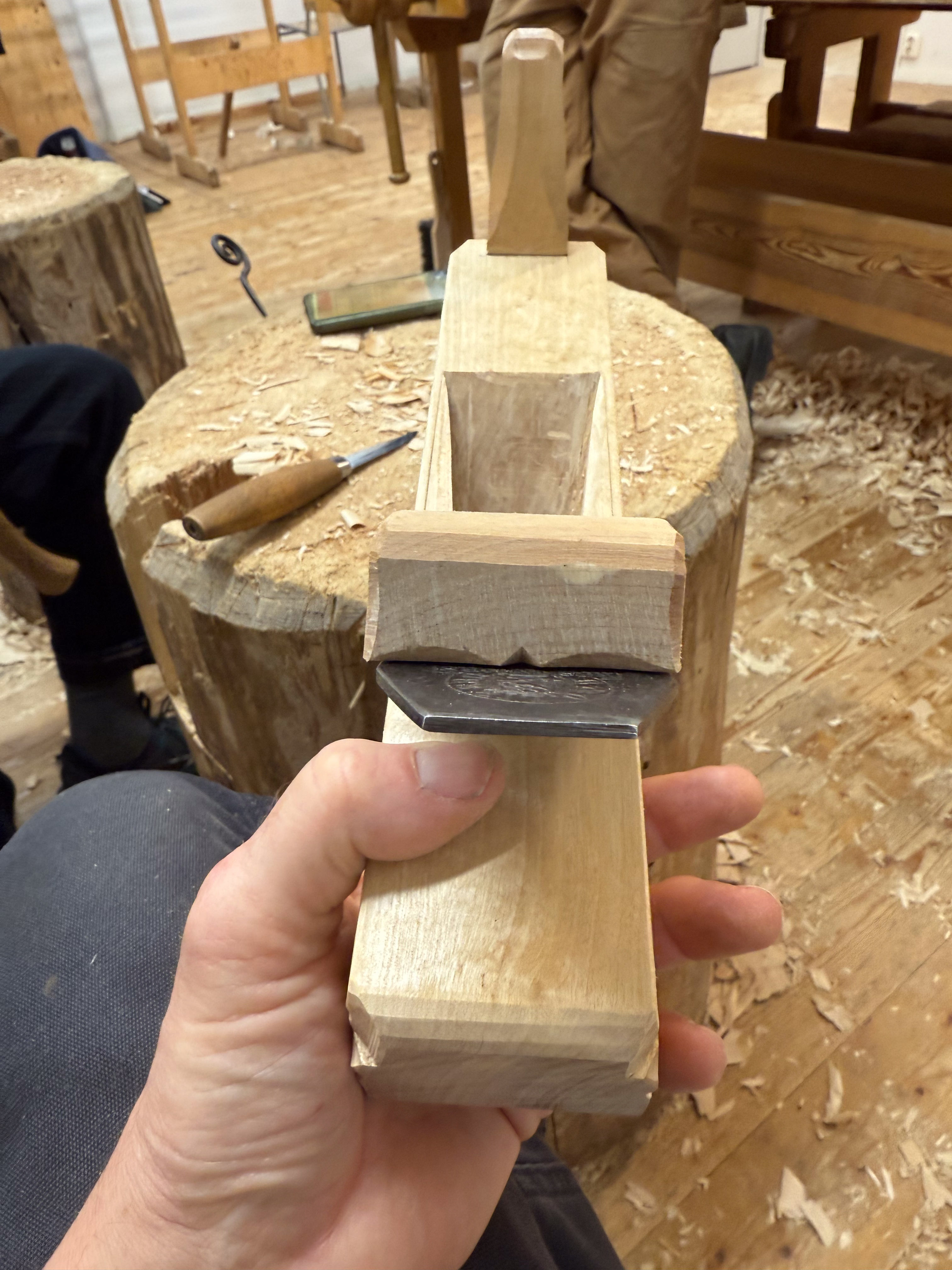
What makes these handmade planes attractive to Björn is that he can shape them to profiles that fit his needs as a preservation carpenter. The antique moldings and casework made for Swedish nobles and found in humble cabins were accomplished with owner-built hand planes. To mimic these shapes, Björn had to learn how to make the tools. For modern woodworkers, a takeaway is that if we want the same individualism in our work, traceable through centuries, we have the option to make our own tools. Our humble efforts might not produce the refined machines gracing the showroom at the local WoodButchers. But we can control the size and shape of our tools, personalize them to fit our particular bodies and methods of work, and de-industrialize them. Having made a handplane with Björn, I feel like I gained some freedom in my ability to express myself as a woodworker and some control over the tools I use.
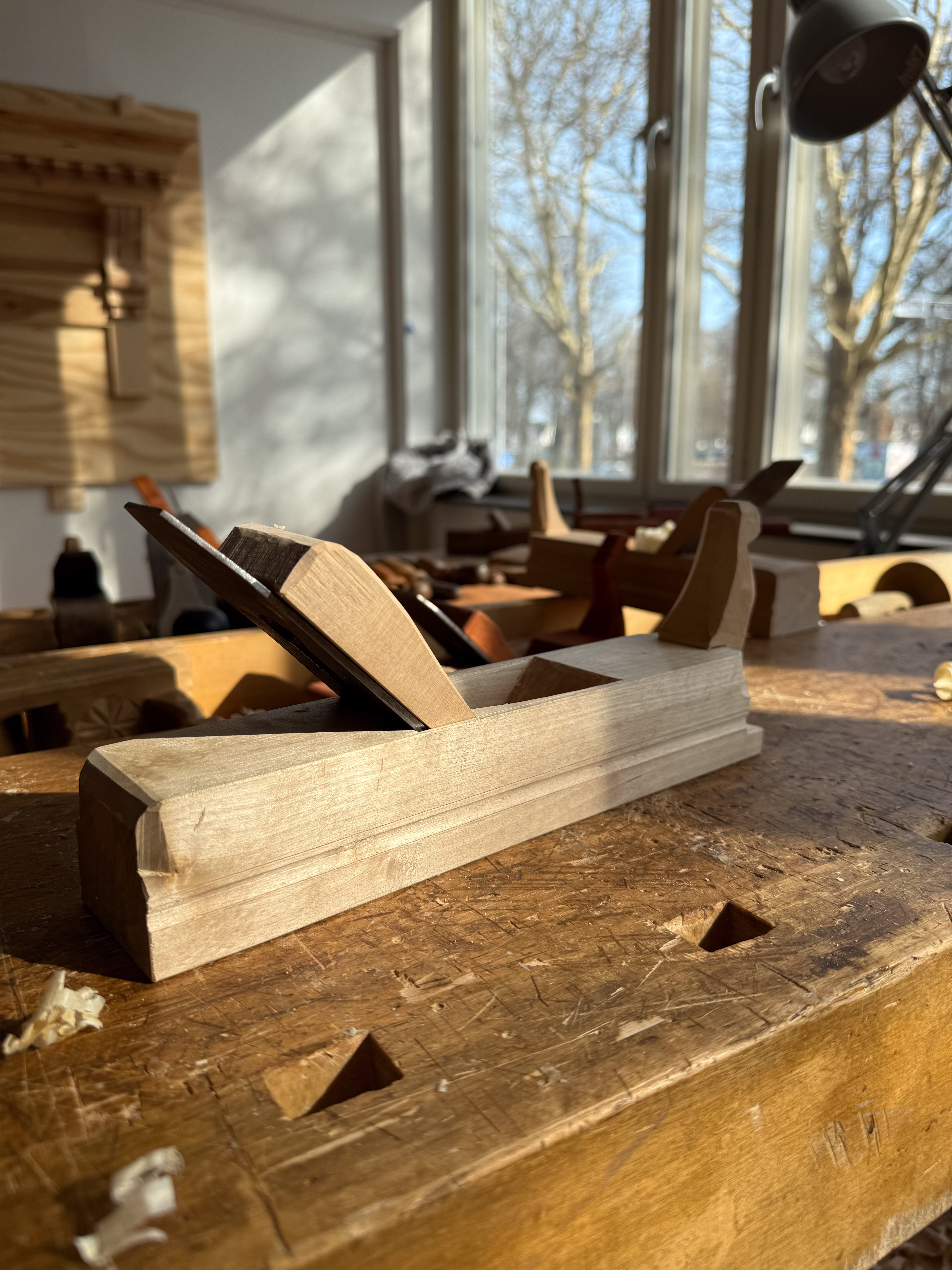
A satisfying feeling: drive a pine board into a toothed planing stop just like cabinetmakers have done since Roman times, on a bench like those used by Gustav II’s ship carpenters. Push a newly handmade birch plane over the rough surface of the board, shaving off the high spots and ridges, until your shavings become wider and wider, the board flattening by way of 17th technology. Wipe some more nose-grease on the sole, and the plane begins to sing, a high-pitched whoosh as the next shaving is ejected from the top. The sheared pine fibers now shimmer in the natural light, and the board is smooth and flat. Ready to become…?
To learn more about Björn Svantesson’s work with historical Scandinavian carpentry, follow him on Instagram @bjorn.svantesson. More information about the University of Göthenburg’s Department of Conservation (known as DepCo) in Mariestad can be found here.